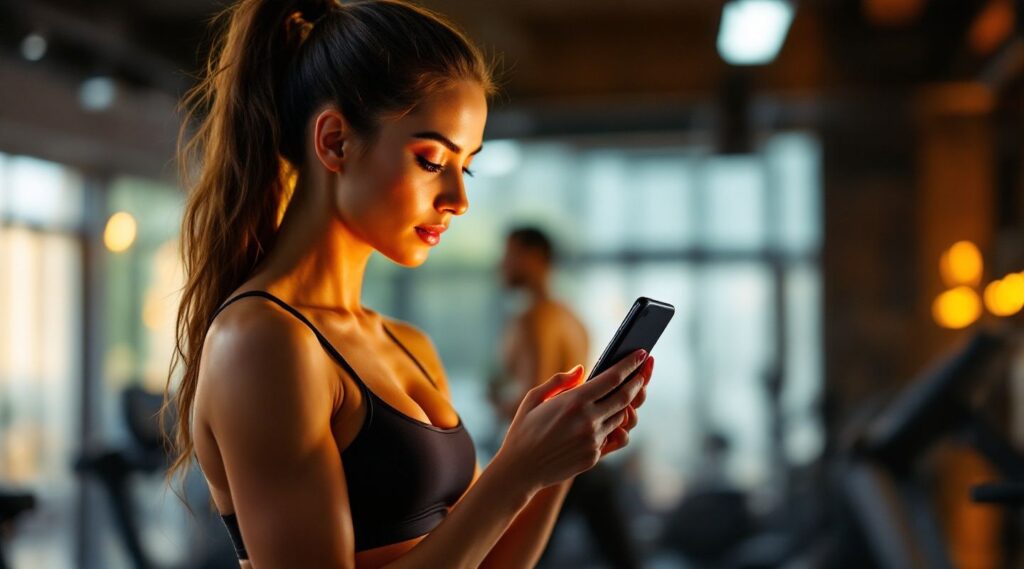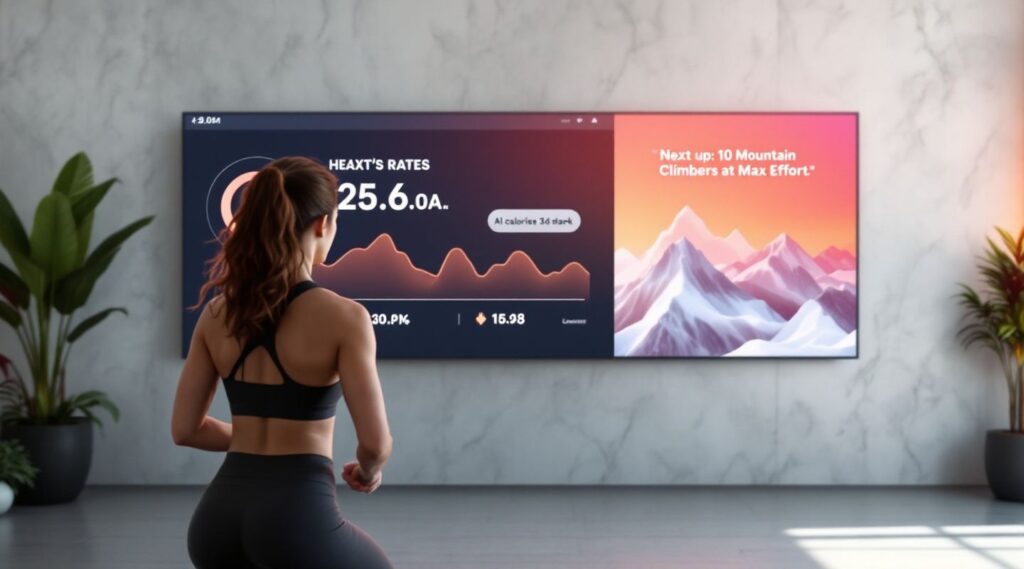How to Use AI as a Personal Trainer: A Guide to Intelligent Fitness
Imagine having a personal trainer who not only remembers your fitness goals but also understands your lifestyle, adapts to your…

Imagine having a personal trainer who not only remembers your fitness goals but also understands your lifestyle, adapts to your progress, and keeps you motivated—all while costing less than your daily coffee.
It’s not a dream anymore; it’s the power of artificial intelligence (AI).
AI personal trainers are revolutionizing the fitness world, providing data-driven, personalized plans that make fitness accessible, engaging, and efficient.
This guide will walk you through everything you need to know about how to use AI as a personal trainer. From understanding how it works to exploring the best tools, you’ll discover how AI can simplify your fitness journey and deliver results tailored to you. Ready to take your workouts to the next level? Let’s dive in.
1. What Is an AI Personal Trainer?

Think of an AI personal trainer as your virtual coach—always ready to design your workouts, track your progress, and offer insights based on your unique needs. It’s like having a personal fitness assistant that grows with you.
AI personal trainers operate using machine learning, a branch of artificial intelligence that processes and analyzes user data. Here’s how it works: You input information like your weight, height, goals, and fitness level. The AI then uses this data to create a customized fitness plan. As you complete workouts and log results, the system adjusts your plan to match your progress.
Here’s why they’re special:
AI isn’t just for athletes or fitness fanatics—it’s for everyone. Whether you’re taking your first step toward a healthier lifestyle or leveling up your current routine, AI personal trainers can guide you.
2. The Benefits of AI Personal Trainers
AI personal trainers come with a host of benefits that make them an appealing choice for fitness enthusiasts of all levels. The major draw?
Personalization. No two people have the same body or goals, and AI excels at creating customized plans that evolve with you.
Here are some key advantages:
- Cost-Effectiveness: Hiring a human trainer can cost hundreds of dollars per month. AI tools, on the other hand, often charge a fraction of that while offering similar features like personalized plans and progress tracking.
- Data-Driven Insights: AI doesn’t just track your activity—it analyzes it. Platforms like WHOOP or Fitbit offer insights on sleep patterns, recovery rates, and even stress levels, allowing you to optimize your fitness journey.
- Flexibility and Convenience: AI trainers fit into your life, not the other way around. Whether you prefer early morning workouts or late-night sessions, they’re always ready to assist.
- Consistency: By sending reminders, tracking habits, and offering motivational nudges, AI helps you build and maintain a routine.
Plus, AI is great at pinpointing areas of improvement. For example, if your progress plateaus, the system will adjust your workout intensity or introduce new exercises to reignite results. It’s like having a coach that always knows what you need next.
As fitness expert Jane Smith says, “AI trainers don’t replace human trainers; they enhance what’s possible by making fitness more accessible and informed.”
3. Popular AI-Powered Fitness Apps and Tools
The market is bursting with AI-powered fitness solutions, but finding the right one can feel overwhelming. To help you get started, here’s a breakdown of some top tools that helps you on how to use AI as a personal trainer:
AI Fitness Apps
Smart Wearables
Emerging Technologies
Exploring different apps and tools is key to finding what works best for you. Look for platforms that align with your fitness style and integrate seamlessly into your lifestyle.

4. How to use AI as a personal trainer: Create Personalized Workout Plans
Personalization is the hallmark of AI personal trainers. They use algorithms to analyze your data—everything from your age and weight to your fitness level and workout history. This allows the AI to craft a plan tailored specifically to your needs.
Here’s how the process works:
- Data Collection: You input key information, such as your fitness goals (e.g., weight loss, muscle gain, endurance), current fitness level, and available equipment.
- Analysis: The AI analyzes your data, comparing it with millions of other users to identify what works best for someone like you.
- Plan Development: Based on its analysis, the AI generates a detailed plan, including exercises, reps, rest times, and even recovery recommendations.
- Adaptation: After each workout, the system adjusts the plan based on your performance, ensuring continuous progress.
For example, if you’re training with Freeletics and find a specific exercise too difficult, the app might swap it for a modified version or reduce the intensity until you improve. Similarly, if you’ve mastered a movement, the AI will increase the challenge to keep you progressing.
Updating your data regularly ensures the AI’s recommendations remain accurate and relevant. The result? A training plan that grows with you.
5. Overcoming Limitations of AI Personal Trainers
While AI personal trainers offer many advantages, they aren’t without limitations. Acknowledging these challenges can help you get the most out of your fitness journey.
Common Limitations
- Lack of Real-Time Form Feedback: AI can’t watch your movements in real-time to correct improper form, which can lead to injuries.
- No Emotional Support: While AI can motivate through reminders and rewards, it can’t replicate the personal encouragement of a human coach.
- Limited Scope for Complex Goals: AI trainers may struggle with nuanced goals like rehabilitating injuries or training for highly specialized sports.
How to Overcome These Challenges
- Supplement with Human Trainers: Use an AI trainer for day-to-day guidance but consult a human trainer for complex needs or occasional form checks.
- Join Communities: Many AI fitness apps have online forums where users share tips and support each other.
- Focus on Form: Use video tutorials and mirrors to check your form until it becomes second nature.
Balancing AI’s strengths with human expertise ensures a well-rounded approach to fitness. AI is a tool—not a replacement for all aspects of training. Combining the two gives you the best of both worlds.
6. The Future of AI in Fitness
AI in fitness is evolving rapidly, and the future holds exciting possibilities. Emerging technologies are pushing the boundaries of what’s possible, making workouts more immersive, efficient, and fun.
Here’s what to expect:
The global fitness tech market is booming, with forecasts predicting it will exceed $14 billion by 2030. Staying informed about these trends ensures you can take full advantage of the latest innovations.
How to use AI as a personal trainer – Conclusion
AI personal trainers are reshaping how we approach fitness, making it smarter, more accessible, and endlessly adaptable. From crafting personalized workout plans to offering insights through wearables, AI empowers users to achieve their goals efficiently and effectively.
While AI has its limitations, combining it with human expertise creates a balanced approach to fitness. Whether you’re just starting or looking to level up, there’s never been a better time to explore AI-powered fitness tools. Take the leap, embrace the technology, and unlock your full potential—it’s time to train smarter, not harder.
